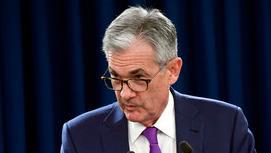What is a big bank? Fed reconsiders standards: Report
The Federal Reserve may soon make it easier for some banks to generate profit by exempting them from rules promulgated in response to the financial crisis.
The Fed is reconsidering how it determines what is considered a large financial institution, according to The Wall Street Journal, which cited people familiar with the matter. That includes potentially redefining thresholds for capital and liquidity rules, as well as asset-size. The changes were reportedly discussed during a recent meeting between senior Fed officials and leaders from the Office of the Comptroller of the Currency and Federal Deposit Insurance Corporation.
Shortly after the crisis the Fed ordered the nation’s largest financial institutions to operate more conservatively so they wouldn’t be as vulnerable to future financial shocks. But the safety those new standards created also made turning a profit harder.
For several supervisory purposes, the Federal Reserve uses total assets of $250 billion or exposures of $10 billion in foreign assets to determine what constitutes a large bank. Many argue, however, that those thresholds are too low.
As reported by the Journal, some large banks, like PNC Financial Services and Capital One, could be affected by changes to the standards under consideration. These institutions, while large, are still meaningfully smaller than the country’s biggest financial institutions.
Loosening regulations could help spur growth and boost activities such as lending.
Scaling back regulations, specifically for smaller banks, has been a goal of both the Trump administration and the Fed. Federal Reserve Chairman Jerome Powell has voiced support for tailoring post-financial crisis regulation so as not to hamper activity at regional banks. Meanwhile, President Trump signed a bill that received bipartisan congressional support in May to scale back Dodd-Frank, which was viewed as a win for smaller and mid-sized financial institutions. The bill marked the first time since Dodd-Frank’s passage in 2010 that members of Congress agreed on reducing its reach.
Among the provisions the law addressed was increasing the threshold, to $250 billion from $50 billion, for banks that are considered potentially “too big to fail,” and therefore subjected to a variety of tests and regulation – including annual stress tests. It simplified capital requirements for banks with less than $10 billion in assets, weakening regulations on trading and lending.
The Fed has also put forth a proposal to loosen the Volcker Rule, an Obama-era rule that prevents banks from making risky investments with their own money. Potential changes discussed included making it easier for banks to prove that they are not engaging in proprietary trading, tailoring the rule based on not only the size of the financial institution but also its level of trading activity and clearing up other terms of the law. JPMorgan CEO Jamie Dimon famously said it required traders to get a psychologist and lawyer to interpret properly.




















